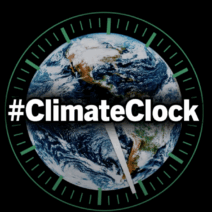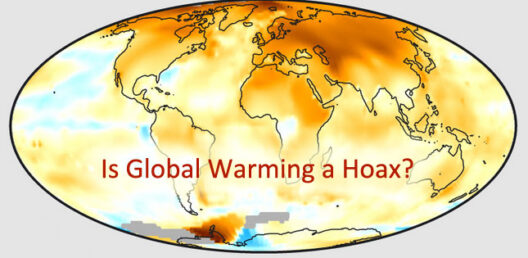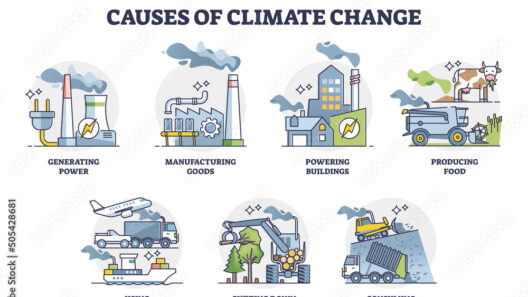In the realm of environmental change, the term “climate refugee” has gained traction, yet its complexity is often overlooked. The phrase evokes images of individuals fleeing desolate landscapes, yet the reality is more nuanced. What does it truly mean to be a climate refugee? This concept warrants a deeper exploration, as it encapsulates the intersection of environmental crises, human rights, and socio-political dynamics.
At its core, a climate refugee, or climate migrant, refers to individuals who are compelled to leave their homes due to sudden or gradual changes in their environment. This can be attributed to various factors, including extreme weather events, rising sea levels, or long-term droughts that render traditional ways of life untenable. As natural disasters proliferate, the very foundation of communities can be dismantled, forcing families to seek refuge elsewhere. The numbers are staggering; millions are projected to be displaced in the coming decades, a phenomenon that is already underway.
One must first comprehend the catalysts behind this displacement. Climate change exacerbates pre-existing vulnerabilities. Low-lying coastal regions, such as parts of Bangladesh and the Maldives, are becoming increasingly inhospitable as sea levels rise, swallowing tangible land. In arid zones, such as sub-Saharan Africa, prolonged droughts create untenable living conditions, often leading to internecine conflict over scarce resources. Thus, migration may be construed as both an adaptive strategy for survival and a desperate act of fleeing despair.
However, the term ‘refugee’ traditionally bears specific connotations, often associated with legal protections and international standards governing their rights. Refugees fleeing conflict may find sanctuary under the 1951 Refugee Convention. Conversely, climate refugees often find themselves in a legal limbo devoid of adequate frameworks that acknowledge their plight. This glaring gap raises essential ethical and moral questions. Are these individuals not worthy of protection? Is their forced displacement any less tragic than that of those fleeing war or persecution?
In a world grappling with climate-induced migration, there is a pressing need for a paradigm shift. Moving beyond the simplistic label of “climate refugees” is critical. It risks undermining the multifaceted realities they face and reduces their experience to mere statistics, stripping away their humanity. It is imperative to recognize climate-motivated migration as a consequence of systemic inequities intertwined with environmental degradation. Wealthier nations contribute disproportionately to greenhouse gas emissions, yet often it is the most vulnerable populations in developing nations that bear the brunt of climate change’s impact.
Understanding the emotional and psychological toll of climate-induced displacement unveils the human side of this complex issue. Families are uprooted from their homelands, severing ties that may have existed for generations. The process of migration can also usher in an identity crisis, as individuals grapple with the loss of home and cultural heritage. Communities are not merely geographical locations—they are woven from narratives, histories, and social bonds that shape one’s identity. When individuals are forcibly displaced, those threads become frayed, leading to a profound sense of loss and disconnection.
Moreover, the implications of climate-induced migration extend far beyond the individuals directly affected. Host communities often bear the brunt of sudden demographic shifts, leading to societal tensions. Resources, such as housing, healthcare, and education, may become strained as newcomers arrive, accentuating pre-existing disparities. Governments must navigate the dual challenge of managing these migrations while ensuring the welfare of both newcomers and residents. Thus, fostering coexistence, understanding, and integration becomes paramount in addressing the multifaceted realities of climate-induced migration.
Policy responses to the phenomenon of climate refugees necessitate a reevaluation of existing frameworks. Collaboration between international organizations, governmental bodies, and non-governmental actors is essential in formulating comprehensive strategies that prioritize the rights and needs of climate-motivated migrants. Approaching climate displacement through the lens of human rights will foster a more just and equitable response. Potential approaches may include establishing legal recognition frameworks, improving disaster preparedness measures, and investing in resilience-building initiatives that help communities adapt to environmental changes.
Moreover, narratives surrounding climate-induced migration deserve significant attention. It is crucial to humanize the discourse and amplify the voices of those affected. By sharing stories that highlight the challenges faced and triumphs achieved, society can foster empathy and understanding. Policymakers and activists must collaborate to ensure that the narratives of climate refugees are authentically represented, thereby shifting public perception and driving progressive action.
Education plays an instrumental role in addressing this urgent issue. Raising awareness about climate change and its repercussions can equip individuals with a more profound understanding of the plight of climate refugees. Engaging the public in dialogues about climate justice, resilience, and the interconnectedness of our global community will promote collective responsibility. Knowledge can serve as a catalyst for change, encouraging individuals and organizations to advocate for sustainable practices and equitable policies that address the root causes of displacement.
As we ponder the future, the implications of climate change and its effects on human mobility will undoubtedly pose significant challenges. The dialogue surrounding climate refugees must transcend rhetoric, fostering tangible actions that uplift and support vulnerable populations. The transition in perspective from viewing climate migration as a burden to recognizing it as a phenomenon requiring compassionate response is pivotal. Only with concerted effort can society hope to navigate the complexities of environmental change while honoring the dignity and rights of those displaced.
The conversation surrounding climate refugees is still in its infancy, yet it is vital for humanity’s collective consciousness. By understanding the human side of environmental change, society can mobilize resources, align policies, and build inclusive frameworks that support the resilience and agency of those confronting the challenges of climate migration. This shift is not only urgent; it is imperative for a harmonious and sustainable future.







